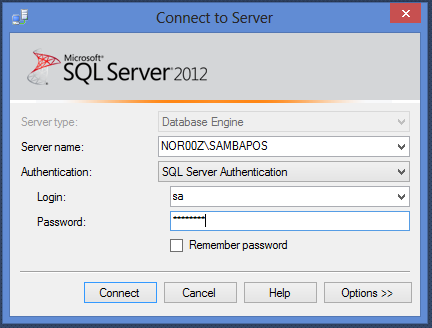

Because SSMS 17.X is based on the Visual Studio 2015 Isolated shell, I figured this is probably a more compatible version for this type of project and decided to stick to it. I recommend using Visual Studio 2015 for this because I had issues with references and dependencies using Visual Studio 2017. If you have Visual Studio installed but don’t have the extensibility tools, you can add them to your current installation through Programs and Features in Control Panel. This will enable you to use the VSIX Project template when creating new Visual Studio projects. RequirementsĪll you need to get started is to have Visual Studio with the Visual Studio Extensibility Tools installed. Hopefully, for everyone else, this is that tutorial…Īs you will see below, the process is far from easy or intuitive and can get really tricky really fast.
#Sql server management studio tutorial how to
They help once you are up and running, but there is not a single tutorial out there that would explain to me how to get an SSMS extension project going. So, maybe the tutorials for Visual Studio extensions would help me to get started. I know there are a lot of extensions for Visual Studio and I know that SSMS 17 is based on the Visual Studio 2015 Isolated shell. All that exists is just incomplete pieces of knowledge and documented experiences scattered all over the internet. The available tutorials are few and far between and unfortunately most of them are too old, explaining the older Add-in system that is no longer supported so unfortunately they are mostly useless. Documentation about creating SSMS extensions doesn’t exist. I would just need to Google around for a bit and I would be on my way in a couple of hours.īoy, was I wrong! There isn’t anything out there. There must be some good beginners tutorials out there… there must be a decent documentation somewhere explaining all the bits and pieces, providing some sample code. Not a lot of them, not as nearly as many as there are available for Visual Studio, but they do exist. It would be easy and straight forward I thought.

You click a button on the menu somewhere and something simple happens. I thought, how hard could it be… it’s just a simple action. BackgroundĪll I wanted was to create a simple SQL Server Management Studio (SSMS) extension to simplify what was already a simple action that I repeat a couple of times a week. The process for extending older versions of SSMS should be similar though. Note: This tutorial is created for extending the latest version of SQL Server Management Studio which at the time of this writing is 17.6. If you want to skip my sad story and the reason why I created this tutorial, you can go to the Requirements section and jump straight to the project. It will cover just the basics of setting up your development environment for developing SSMS extensions from scratch. If you don’t know where to begin with creating your own, you’ve come to the right place. This will be an absolute beginner’s guide on how to get started with creating SQL Server Management Studio 17 (SSMS) extensions. Note: There’s an updated version of this tutorial for SSMS 18 available here.


 0 kommentar(er)
0 kommentar(er)
